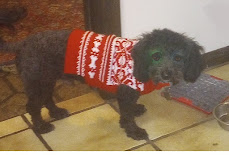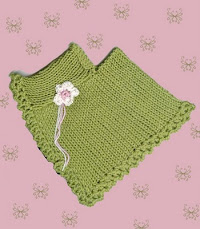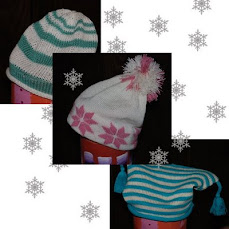On a roll now. A felting project for you.
 This purse/tote/satchel is easy to
make and is sturdy. It can be knit on any
gauge machine, but a midgauge or bulky machine is preferable; a midgauge was
used for the sample.
This purse/tote/satchel is easy to
make and is sturdy. It can be knit on any
gauge machine, but a midgauge or bulky machine is preferable; a midgauge was
used for the sample.
In
selecting yarns, be sure the yarns are 100% wool, not superwash or treated to
be washable and dryable. It’s best to
use the same brand for all of the colors.
Even so, the colors will likely felt at
different rates.
I
chose saturated colors that are considered to be “jewel tones”. You may prefer earth tones or pastels. It’s a good idea to put the colors together
and study them a bit, perhaps removing some and adding others as you study the
composition. You could also knit with
just two colors for a checkerboard effect.
The
purse is constructed so that you attach pieces as you knit. This eliminates seams.
This
is a good project to use up small amounts of yarn in your stash.
The
knitting level is approximately at an advanced beginner level. Some sewing skills are required.
I
lined the bag for extra body, but this is optional.
MACHINE Pattern
is written for the midgauge but a bulky machine would work as well since the
science of felting is not so exact anyway .
YARN I used
Paton’s Merino wool- a medium worsted
weight. I used small amounts of 16
different colors, 2 skeins of the colors used for the hems and straps. You could successfully use less colors and
place them randomly. If you are using up
yarn from your stash, improvise as far as how much of any one color to use. You can also use a thinner yarn and double it
to approximate the medium worsted weight, but do this throughout, not for just
selected patches.
GAUGE Before
felting, 4 stitches and 5 rows = 1 inch.
FINISHED SIZE
14” high by 20 inches wide;
depending on how your yarn felts, it may vary some from this size.
OTHER MATERIALS
five ¾ inch beads for decoration and closure, ¾ yard coordinating lining
material, small amount of interfacing for inner pocket, matching sewing thread,
large- eyed sewing needle and sewing machine.
KNITTING NOTES
· As stated above, this pattern provides directions
for a midgauge machine. You can
modify for the machine you are using.
That is, if using a bulky, you could multiply stitches and rows by 80%
or so, or knit it the same as the directions for a slightly larger bag. If
using a standard gauge machine, I would multiply the stitches and rows x 140%. Always use the highest tension (loosest) for
best felting, regardless of which machine you are using.
· It’s a good idea to do a tension swatch
to see what you need to do for each patch. You may want to adjust the size of
the squares. I was aiming for square
patches, but mine came out a little on the rectangular side. Even though I did do a swatch, the knitting
tends to shrink more in length than it does in width. If you’re ok with this, follow the
directions as written. If you want
squares, add a few rows to each patch to compensate for the extra shrinkage in
length.
· Examine
the edge of the knitting. You want to be
able to identify the loops. The knitting
will have a loop and on top of that a knot.
You will hang the loops to attach one strip or piece to the next.
· It’s
not a bad idea to draw yourself a chart on paper and decide color placement
ahead of time.
DIRECTIONS
Straps Knit 2 the same
T 10.(loosest throughout) Ewrap 18 needles, knit 120 rows. Bind off loosely. (This size makes a comfortable shoulder strap.) Fold in half and stitch shut with a mattress stitch. Two layers makes it stronger.
Patchwork
strips to make the rectangular sides - Make two sides
Strip one: Cast
on with waste yarn over 20 stitches, T 10. and knit a few rows. RC 000. With main yarn, E wrap on and knit to
RC 24. Drop color one and knit 24 rows
of color two. Drop color two and knit 24
rows of color three. Drop color three
and knit 24 rows of color four. (RC
96) Take strip off on a few rows of waste
yarn. Tie yarn ends together so they
don’t unravel.
Strip two: Cast
on with waste yarn over 20 stitches, T 10. and knit a few rows. RC 000.
Ewrap on with main yarn. With the
wrong side of strip #one facing you, hang the first loop on the left
needle. With new color main yarn, knit
2 rows. Pick up the next loop from the
completed strip, hang it on the left most needle, knit 2 rows. When you have reached 24 rows of the new
patch, change colors and proceed in the same manner until you reach the top and
have added 4 patches. (RC 96) Take off on a few rows of waste yarn. Try to
make the colors come out so that they line up across from each other. Fudge if you have to, but if you are picking
up loops, not knots, it should come out right.
Strips three and four:
Knit in the same manner as you did strip two.
Tie yarn ends together so they don’t unravel.
Make the second rectangle the same as the first. Hide
yarn ends. Remove waste yarn from the
bottom of the bag.
SIDE
GUSSETS
These are knit while hanging the bottoms and sides at
the same time. (See drawing below.)
Cast on with waste yarn over 24 stitches, knit a few
rows T 10. Change to main yarn, knit one
row. ( I knit the bottom of the gusset
in one color and the sides of the gussets in a second color, but you can use
just one color.)
With the wrong side of rectangle #one facing you, find
the exact center of the bottom and hang that stitch on the leftmost
needle. With the wrong side of rectangle
#two facing you, find the exact center of the bottom and hang that stitch on
the rightmost needle. Knit two rows. When you get to the corner, knit 3 rows
before hanging rectangle stitches. (This
helps the gusset go more smoothly around the corner.) Check frequently that you are in the same
place on both sides. If you get off
track, it’s best to redo or the bag will bias.
When you have knit the gusset and joined all the way to the top, take
off on waste yarn. Turn the piece
around, pick up the bottom stitches from the waste yarn and knit in the other
direction. Difficult to explain, but
it’s not hard to do. When done knitting
the second gusset, remove waste yarn.
TOP
HEM
You should have 100 stitches on each side of the bag
--- 80 from the rectangle, 10 for half of the gusset on both sides. Hang
one half of the bag stitches, wrong side facing you, decreasing evenly
across to 80 stitches. With main yarn,
knit 13 rows. Pick up and hang first row
to make hem. Knit one row by hand left
to right and bind off loosely. Repeat for the other side of the bag.
I
CORDS
Side ties: Set machine to slip one way, knit the other
to make I cords. Knit a 4 stitch I cord,
changing colors as desired to RC 220. Bind off by placing the outer stitches on
the center stitch and binding off the two remaining stitches. Make two the
same.
Front closure: Knit one four stitch I cord 80 rows
long. Bind off as above.
Short I cord decorations: With the wrong side of one side facing you, fold down the hem toward you. Pick up 3 stitches from the right side, 2 ½ inches from the edge and immediately under the hem. Set machine to slip one way, knit the other to make 3 stitch I cords. Knit 40 rows. Bind off as above to one stitch. Repeat across the bag, staggering the I cords every 4 stitches or so and changing colors and lengths at random. My I cords were 20, 30, 40 and 50 rows long using all the colors in the bag, one to each I cord. Leave a 2 ½ inch space when you reach the end. With a large-eyed embroidery needle, hide yarn ends by sewing up into the tube and snipping.
Repeat on the other side of the bag.
FINISHING
Sew
the two sides together at the top hem with a mattress stitch, both sides. Felt the purse, I cord side ties, front
closure I cord and straps at the same time in the washing machine. Hot/cold cycle with a small amount of
detergent and a few other smooth pieces of clothing. (No towels.)
Stick around to watch the progress.
Repeat cycle if necessary. When felted
to your satisfaction, stuff the satchel with scrunched up plastic bags and lay
flat to dry.
Pinch the sides together at the top and with a large knitting needle (at least size 10) poke a hole through all 4 layers. Thread the I cord side ties through these holes and tie a knot close to the purse. This cinches in the purse at the top. String a bead onto the end of each side I cord and tie a knot to hold in place. Repeat for other side. If you don't cinch in the sides, the top is too wide open.
With a sewing machine, sew straps to purse about 3 inches in from each side. Sew a few times for strength. Fold the front closure I cord in half and sew the two ends to the top middle of one side, on the inside. Sew a bead onto the purse, measuring where it should be.
Slip over the bead for measurement and sew together just above the bead with sewing thread so that the top stays closed.
LINING
Lay the bag on a piece of paper for a
pattern and trace around it leaving room for 5/8” seams on all sides and a 2”
hem on the top. Cut out two layers of
your lining with this pattern.
For pockets, cut two rectangles about 10” wide x 8” long out of the lining material and same out of interfacing. With right sides of the lining material together and the interfacing on top, sew around 3 sides. Turn right side out. Stitch down the pocket to one side of the lining about two inches down from the top and in the middle. Sew vertical lines to divide the pocket for pens, cell phones, etc. Embroider initials on the other side of the lining. With right sides together, sew around the lining, leaving the top open. Push into the felted bag, tacking the bottom of the bag to the bottom of the lining in a few places on the inside. Fold under the top hem to cover up the machine stitching. Hand sew with tiny stitches and doubled thread.
I hope you enjoy this project. It certainly will be unique to you.







































































